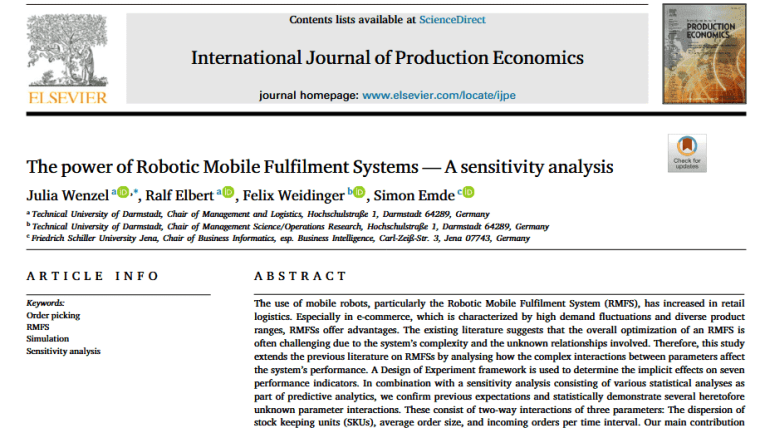
Meldung vom:
The use of mobile robots, particularly the Robotic Mobile Fulfilment System (RMFS), has increased in retail logistics. Especially in e-commerce, which is characterized by high demand fluctuations and diverse product ranges, RMFSs offer advantages. The existing literature suggests that the overall optimization of an RMFS is often challenging due to the system’s complexity and the unknown relationships involved. Therefore, this study extends the previous literature on RMFSs by analysing how the complex interactions between parameters affect the system’s performance. A Design of Experiment framework is used to determine the implicit effects on seven performance indicators. In combination with a sensitivity analysis consisting of various statistical analyses as part of predictive analytics, we confirm previous expectations and statistically demonstrate several heretofore unknown parameter interactions. These consist of two-way interactions of three parameters: The dispersion of stock keeping units (SKUs), average order size, and incoming orders per time interval. Our main contribution lies in identifying key efficiency factors for RMFS’s layouts, particularly highlighting the importance of station arrangement and the significant impact of SKU dispersion on system performance and resource utilization. Furthermore, our comparison of different layouts shows that those with fewer stations can optimize order picker utilization and achieve higher efficiency with fewer resources. Our findings confirm that SKU dispersion is the most influential factor affecting RMFS’s performance. We conclude that RMFS can be effectively applied to various scenarios by following our recommendations on SKU dispersion and layout design.
Link zum Paper: https://doi.org/10.1016/j.ijpe.2025.109641Externer Link